Spring is Almost Here! Chilean Grapes & Juices + South African Juices Available For Purchase

Hey Winemakers,
Spring harvest is officially in motion, and we’ve got premium Chilean grapes, Chilean juices, and South African juices ready for order! If you’re looking to craft something special this season, now’s the time to secure what you need before we sell out.
This Spring’s Offerings:
Chilean Grapes & Juices – Fresh, high-quality fruit and juices for bold, structured wines
South African Juices – Unique flavors and exceptional quality, perfect for trying something different
Seamless Pickup & Delivery – Our logistical network ensures you get the freshest product, hassle-free
Orders are first-come, first-served, and things are moving fast! Let us know what you need, and we’ll take care of the rest.
Looking forward to another great season—let’s make some wine!
- From Chile:
- Grapes Varieties: Carmenere, Cabernet Sauvignon, Cabernet Franc, Malbec, Merlot, Pinot Noir, Syrah, and Sauvignon Blanc
- Juice Varieties: Carmenere, Cabernet Sauvignon, Cabernet Franc, Cabernet/Merlot Blend, Malbec, Merlot, Petite Verdot, Pinot Noir, Syrah, Chardonnay, Pinot Grigio, Sauvignon Blanc, and Viognier.
- Fresco Juice Varieties: Cabernet Sauvignon, Carmenere, Malbec, Merlot, Chardonnay, Chardonnay-Semillon, Sauvignon Blanc, Viognier
- From South Africa:
- Juice Varieties: Shiraz, Merlot, Pinotage, Cabernet Sauvignon, Semillon, Chardonnay, Pinot Grigio, Chenin Blanc, Sauvignon Blanc
- Fresco Juice Varieties: Cabernet Sauvignon, Pinotage, Shiraz, Sauvignon Blanc
Winemaking Resources to Support Your Craft
At Musto Wine Grape Co., we know that great wine starts with the right tools and knowledge. That’s why we offer everything you need to make the most of your spring winemaking season:
- Educational Videos: Learn step-by-step techniques with our in-depth winemaking courses at WinemakingInstructions.com.
- Equipment and Supplies: From fermenters to presses, we have everything you need to get started or upgrade your setup.
- Consulting Services: Our experienced winemakers are available year-round to answer questions and guide you through the process.
Contact Us to Get Started!
Sincerely,
The Musto Crush Crew
📞 Phone: 860-278-7703
📧 Email: sales@juicegrape.com
🌐 Website: www.juicegrape.com
Cheers to a successful spring winemaking season! 🍇🍷
Spring Into Winemaking: Discover Musto Wine Grape Co.’s Spring Offerings

Spring Into Winemaking: Discover Musto Wine Grape Co.’s Spring Offerings
As the days grow warmer and the promise of spring approaches, it’s time for winemakers to prepare for an exciting new season of crafting exceptional wines. At Musto Wine Grape Co., we’re thrilled to bring you our spring lineup of premium grapes, juices, and winemaking resources to help you create your next masterpiece. Whether you’re a seasoned winemaker or just starting your journey, our spring offerings are here to inspire and support your passion.
Chilean Grapes and Juices: The Best of the Southern Hemisphere
Spring marks the arrival of our highly anticipated Chilean grapes and juices. Known for their exceptional quality and bold flavors, Chilean products offer winemakers a unique opportunity to craft wines with depth, character, and global appeal.
Why Choose Chilean Grapes and Juices?
- Premium Varieties: Chilean products deliver versatility and quality, from rich reds like Cabernet Sauvignon and Carménère to vibrant whites like Sauvignon Blanc and Chardonnay.
- Ideal Terroir: Grown in Chile’s renowned valleys, these grapes benefit from the country’s perfect climate and fertile soils, producing wines with unparalleled flavor.
- Freshness Guaranteed: Our Chilean grapes and juices are handled carefully to maintain their freshness and quality during transport.
- From Chile:
- Grapes Varieties: Carmenere, Cabernet Sauvignon, Cabernet Franc, Malbec, Merlot, Pinot Noir, Syrah, and Sauvignon Blanc
- Juice Varieties: Carmenere, Cabernet Sauvignon, Cabernet Franc, Cabernet/Merlot Blend, Malbec, Merlot, Petite Verdot, Pinot Noir, Syrah, Chardonnay, Pinot Grigio, Sauvignon Blanc, and Viognier.
- Fresco Juice Varieties: Cabernet Sauvignon, Carmenere, Malbec, Merlot, Chardonnay, Chardonnay-Semillon, Sauvignon Blanc, Viognier
South African Juices: A Taste of Innovation
We’re also excited to offer premium juices from South Africa, a wine region celebrated for its dynamic and distinctive wines. Spring winemaking with South African juices allows you to explore bold reds like Pinotage or crisp whites like Chenin Blanc.
Why South African Juices?
- Unique Varietals: South Africa’s diverse terroir and rich winemaking history bring a fresh perspective to your cellar.
- Sustainability Focus: Many South African vineyards prioritize eco-friendly practices, ensuring high-quality and ethically produced wines.
- From South Africa:
- Juice Varieties: Shiraz, Merlot, Pinotage, Cabernet Sauvignon, Semillon, Chardonnay, Pinot Grigio, Chenin Blanc, Sauvignon Blanc
- Fresco Juice Varieties: Cabernet Sauvignon, Pinotage, Shiraz, Sauvignon Blanc
Sterile Juices: Year-Round Convenience
Not quite ready for fresh grapes? Our sterile juices are the perfect option for winemakers looking for convenience without compromising quality. These juices are available year-round, allowing you to make wine on your schedule.
Top Benefits of Sterile Juices:
- Consistent Quality: Sterile juices provide reliable results, making them perfect for beginners and experienced winemakers.
- Wide Range of Varietals: Explore options like Zinfandel, Merlot, Riesling, and more.
- Easy to Use: No crushing or destemming required—just ferment and enjoy!
Winemaking Resources to Support Your Craft
At Musto Wine Grape Co., we know that great wine starts with the right tools and knowledge. That’s why we offer everything you need to make the most of your spring winemaking season:
- Educational Videos: Learn step-by-step techniques with our in-depth winemaking courses at WinemakingInstructions.com.
- Equipment and Supplies: From fermenters to presses, we have everything you need to get started or upgrade your setup.
- Consulting Services: Our experienced winemakers are available year-round to answer questions and guide you through the process.
Get Ready for Spring Winemaking
Spring is a time for new beginnings, and there’s no better way to celebrate the season than by crafting your wine. Musto Wine Grape Co. has you covered if you’re looking to try a new varietal, experiment with blending, or restock your cellar.
Don’t wait—our Chilean grapes, South African juices, and sterile juice options are in high demand and won’t last long. Reserve your order today and get ready to create wines as vibrant and memorable as the season itself.
Contact Us to Get Started
📞 Phone: 860-278-7703
📧 Email: sales@juicegrape.com
🌐 Website: www.juicegrape.com
Cheers to a successful spring winemaking season! 🍇🍷
How Much Wine will a Case of Grapes Make from Chile?
Each case of wine grapes from Chile is 18lbs. Depending on the grape variety, you should yield about 1.5-2 gallons of must per case.
However, keep in mind that certain wine grapes are “juicier” than others. For example, Syrah is considered a “juicer” grape than a Cabernet. If you look closely, you can see the difference in the shape of the berries. The Syrah grape has more of an “egg” shaped berry to it. The Cabernet is more of a circle shaped berry. The berry size, climate, soil, and vineyard practices will all help determine how much juice is produced in each berry, and the berry intensity.
Usually each case of 18lb wine grapes will yield about 1.25-1.50 gallons of finished wine.
That equates to about 7 bottles of wine.
Other factors that influence how much must and/or juice you yield per case:
How your rollers are positioned in your crusher destemmer
How much you press after fermentation is completed
How much wine you loose during racking
If you barrel age your wine
If drink a lot of wine during bottling
Keep these topics in mind when you are deciding on how many cases of grapes you want purchase versus how much wine you want to make. If you ahve any questions do not hesitate to reach out to us via email (sales@juicegrape.com) or phone (877-812-1137).
How to Make Chilean Cabernet at Home
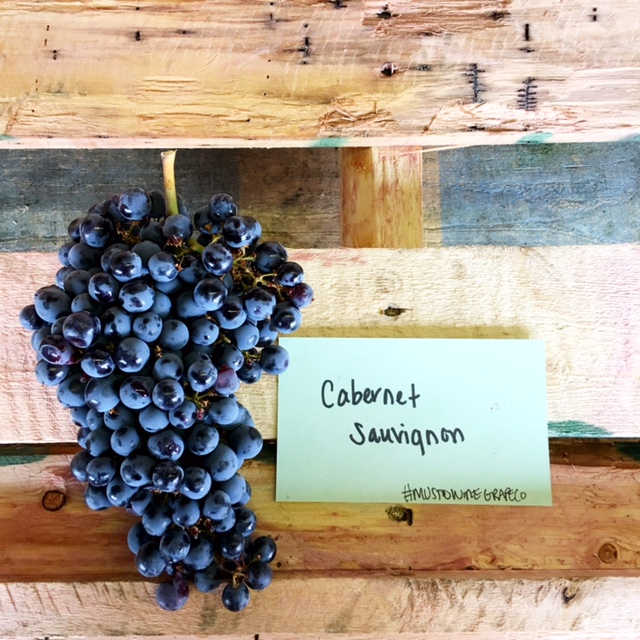
Cabernet is King, no matter the region. At MWG we are grateful to be able to bring in Cabernet grapes and juices frrom Chile for wineries and home winemakers. Cabernets from Chile are very bold with notes of blackberry, casis, and plum. The tannins are medium to medium plus on the palate make this a great wine to enjoy with a steak or a hearty meal. Introducing oak into this style of wine only helps create more complexity on the palate and finish. Some winemakers also blend thier California Cabernet with thier Chilean Cabernet to create an “International” Cabernet Wine. There are lots of fun things to try when making Cabernet from Chile!
- Crush Cabernet grapes into a sanitized bin or tub. (Each 18lb crate will make 1.25 gals of finished wine).
- Apply 50ppm of Potassium Metabisulfite and stir well. Allow to sit for 8-12 hours.
- Apply .5ml of Color Pro Pectic enzyme per box diluted into a 10% solution with water to the must and stir. Allow to sit for another 8-12 hours.
- Mix Booster Rouge, FT Rouge, and Opti-Red, with spring water until it is the consistency of pancake batter and pour over top of crushed grapes. Mix in well.
- Add rehydrate CSM yeast (1g/gal) with Go Ferm rehydration nutrient and warm water. Allow to sit for 15 minutes and pour over top of crushed grapes.
- Punch down grapes 3 times per day throughout the duration of fermentation and monitor temperature and Brix levels daily. Use a hydrometer to test sugar content in a strained juice sample. Make sure the temperature does not exceed 85F.
- One day after adding the yeast, add Fermaid O, mixed with spring water in to the pancake batter style slurry. Dump into grapes during a punch down.
- After the depletion of 1/3 of the Brix (when the Brix level is between 16-11), add Fermaid O that is mixed with spring water into the pancake batter style slurry. Dump into to grapes at a punch down.
- Add Malo-lactic bacteria the same day as the Fermaid K. If you are using liquid cultures, just pour over the grape must and mix. If you use the dry cultures, rehydrate them in warm spring water according to their specific directions, utilizing any rehydration nutrients recommended.
- When the Brix have dropped below zero, press the wine into a sanitized tank, carboy, or demijohn. Make sure the vessel is topped up all the way to the top of the neck and sealed properly with a bung and airlock.
- Rack after 48 hours and then again in a week. Allow MLF to complete before adding sulfites.
- Allow the wine to age and rack it every 2 months and add sulfites when racking.
Recipe by the Winemakers at Musto Wine Grape
Interested in making your own wine? Musto Wine Grape Company is here to help! Musto’s New England’s largest supplier for home winemaking products and services. Visit juicegrape.com or give us a call at (877) 812 – 1137 to learn more.
The Chileans have ARRIVED!
Hello Winemakers,
The time has finally come! ALL of the Chilean grapes and juices have arrived! Give us a call or shoot us an email to set up your pick-up.
877.812.1137 – sales@juicegrape.com
Happy Winemaking!!
Sincerely,
The Musto Crush Crew
2018 Chilean Harvest Update
This year’s growing season should produce some intense and complex wines!
We are very excited and fortunate to be sourcing our Chilean grapes and juices from the “Heart of the Chilean Wine Industry” known as the Curico Valley. Curico has been a wine grape growing region since the 1800s. With its fertile soil, microclimates, and the ability to grow over 30 different wine grape varieties, it’s no wonder this prestigious region is considered the heart of the wine industry.
Soil Content: Sand, clay, decomposed granite, and volcanic-alluvial.
The second region we will be sourcing from is the Colchagua Valley. The Colchagua Valley is known for growing bold red wines, such as Carménère, Cabernet Sauvignon, Cabernet Franc, and Syrah. It has a mediterranean climate and is located along the southern end of the Rapel Valley. This topography creates a climate that receives around 23.3 inches of rainfall per year and little to no rainfall during their summer months. This helps keep the grapes safe close to harvest and ensures that the grapes are fighting for water therefore creating a more intense fruit.
Soil Content: Sand, decomposed granite, and clay
This year’s harvest has gotten off to a great start. The white grapes are coming off the vine and will be in transit soon. Our early red grapes such as Pinot Noir and Merlot will start harvesting around March 30th.
Arrival Dates: White grapes should arrive around the last week in April and the red grapes should start to arrive around the first week in May. Get your crushers ready!
Grapes Still Available: Carmenere, Chardonnay, Pinot Grigio, Sauvignon Blanc, and Viognier
Sold Out: Cabernet Sauvignon, Cabernet Franc, Malbec, Merlot, Petite Verdot, Pinot Noir, and Syrah
Fresco Juices Available: Cabernet Sauvignon, Carmenere, Merlot, Malbec, Chardonnay, Sauvignon Blanc, Viognier, Chardonnay/Semillon Blend
Yeast suggestions for the following grapes via Manuela Astaburuaga
Yeast suggestions for the following grapes via Manuela Astaburuaga. Manuela is the enologist at “Correa Albano” and has studied in both France and New Zealand. Her family also owns many of the vineyards we source from.
- Sauvignon Blanc – For the SB the most important thing is the yeast that express the thiols aromas. Try VIN13 to bring out such thiol aromas like tropical fruits.
- Carmenere & Merlot – Try a yeast that expresses the black fruits like CSM
- Cabernet Sauvignon –You want the fruit and earthiness to shine. Try D254, BM4X4, or CSM. Maybe think about blending yeasts for more complexity!
- Pinot noir – RC 212 is one of the best yeasts for Pinot Noir.
Manuela’s Favorite Blend: Merlot-Carmenere
Why does Sauvignon Blanc wine taste so good from Chile? (According to Manuela)
- “The different temperature between day and night is very important to the aroma expression, we have that kind of climate in our Valley (Curicó) so our SB is very aromatic and with a good acidity. We ferment at 58-50ºF to preserve the aromas.”







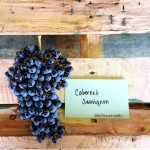
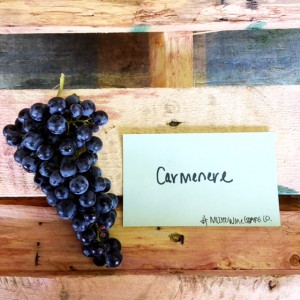
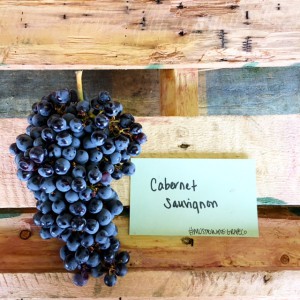
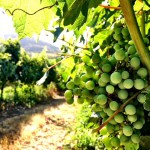

Recent Comments